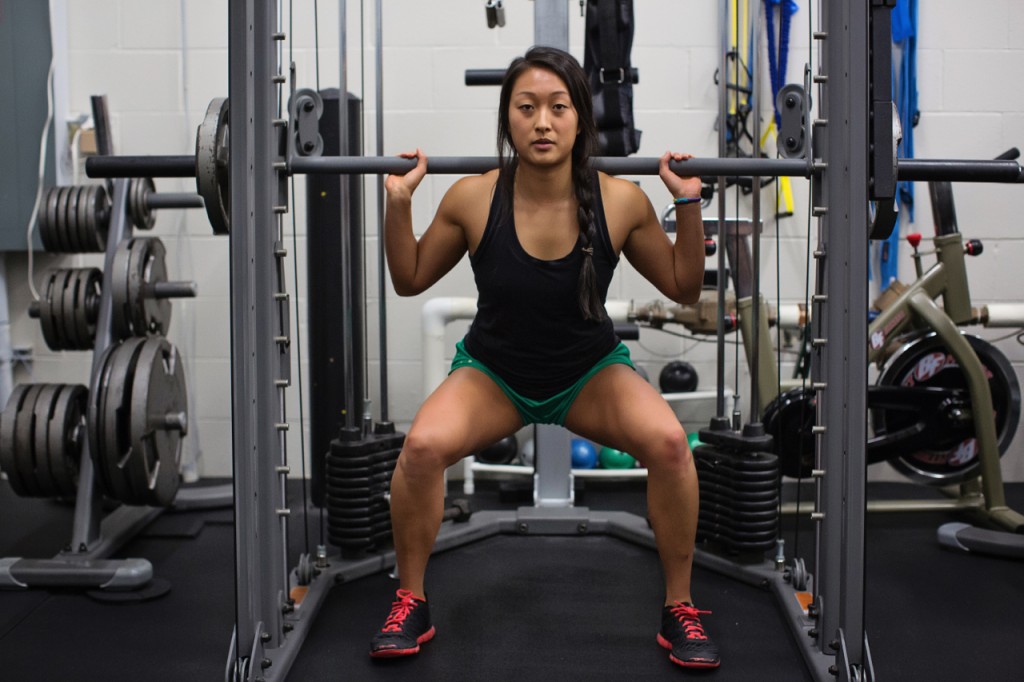“Squat deeper”.
“Go all the way down”.
“Get your knees up higher”.
Most of our clients hear statements such as these from their instructors all of the time. Moving through a limited range of motion is one of the most common errors that we correct every day. But why are we so adamant that you move through a full range of motion? Just what benefits do you receive from doing so?
Read on, and find out.
Flexibility
There is an unfair and inaccurate stigma surrounding weight-lifting that by lifting weights you will sacrifice flexibility. Little research actually supports this assertion, and in fact, much research has proven it false . Weight-lifting can actually improve flexibility even without stretching, but only when one is sure to move through a full range motion!
Strength
Research has shown that moving through a full range of motion confers superior strength benefits than moving through a partial range. Additionally, you gain the majority of your strength within the specific range of motion through which you move. This means that if you continuously neglect the bottom portion of a squat or chest press, you will be significantly weaker in that neglected position. This has many functional consequences in everyday life, such as struggling to sit up from a chair if you ignore the bottom portion of a squat.
Muscle Size and Tone
It is very common to walk into a weight room and see someone using a weight that is much too heavy for them through a very limited range of motion. These people are often men hoping to gain muscle mass and the mere thought of decreasing the weight they’re lifting makes them feel anxious and sick to their stomach. Research suggests that if they were to just check their ego, lower the weight, and move through the full range of motion, they likely would see superior increases in muscle mass and “tone” (“tone” is simply muscle mass in the absence of significant body fat).
Energy Expenditure
For many of our clients this may be the most motivating reason to move through a full range. In order to expend the most calories possible in your workout you need to move through a full range of motion. More muscle fibers are recruited, more work is performed by your muscles, and therefore more calories are burned.
Exceptions to the Rule
When certain movements cause significant pain, or if injury limits your range of motion, then it may be wise to purposely limit the range you move through. This usually doesn’t mean that this range is lost to you forever, but progressive strengthening and gradual steps should be taken to “retake” that painful part of a movement. For example, for many people with shoulder issues, it may be necessary to temporarily decrease the range of motion on a chest press until the smaller rotator cuff muscles are strengthened, and inflammation in the joint is reduced.
Be consistent with any exercises you are given to do at home, and then gradually work your way back to a larger range of motion with the guidance of your practitioner. Your motion likely doesn’t have to be limited forever unless you allow it to be.
Oftentimes pain comes from using improper form, not the range of motion itself. Before limiting your range of motion due to pain, be sure that you are using correct form.
Take Home Message
While it may be easier to do “knee-bends” instead of squats, and “head bobs” instead of push-ups, you are only doing yourself a disservice by doing so. Decrease the weight you are using, or do an easier exercise variation through a full range of motion and progress from there. Increased flexibility, strength, muscle size/tone, and increased calorie expenditure are all benefits of moving through a full range of motion.
So, the next time you are in class, really focus on keeping those heels down and sinking your hips on squats, or putting your nose to the ground on your push-ups (modify to your knees if you have to!) You will be doing yourself a favor in the long run!
About the Author:
-

Michael Stack is the founder & CEO of Applied Fitness Solutions and Frontline Fitness Pros. He is a faculty lecturer for the University of Michigan’s School of Kinesiology. He is also the creator and the host of the Wellness Paradox Podcast, produced in conjunction with University of Michigan.
Michael is an exercise physiologist by training and a health entrepreneur, health educator, and fitness industry advocate by trade. He is dedicated to enhancing the standard of practice of, and advocating for, fitness and wellness professionals to ensure they become an essential constituent in the healthcare delivery system.
With a career spanning over three decades in fitness, health, and wellness Michael has a deep knowledge of exercise physiology, health/wellness coaching, lifestyle interventions to mitigate chronic disease and leadership. He is credentialed through the American College of Sports Medicine (ACSM) as an Exercise Physiologist (ACSM-EP), Exercise is Medicine practitioner (ASCM-EIM), and a Physical Activity in Public Health Specialist (ACSM-PAPHS). Michael is a National Strength & Conditioning Association (NSCA) Certified Strength & Conditioning Specialist (CSCS), and a CDC Diabetes Prevention Program (DPP) Lifestyle Coach.
Michael received his undergraduate degree from the University of Michigan’s School of Kinesiology in 2004 and is currently a Master’s of Public Health (MPH) candidate at University of Michigan, with a specific concentration in health behavior and health education.
Michael is a board of directors’ member for the Physical Activity Alliance and Michigan Fitness Clubs Association. He sits on the University of Michigan’s School of Kinesiology Alumni Board of Governors. Michael is an expert curriculum reviewer for the American College of Lifestyle Medicine. Finally, he is a member of the executive leadership team for American Heart Association’s Heart Walk.
Michael lectures nationally for several health/fitness certification and continuing educations, including; IHRSA, the Medical Fitness Association, the National Strength & Conditioning Association, and SCW Fitness.

